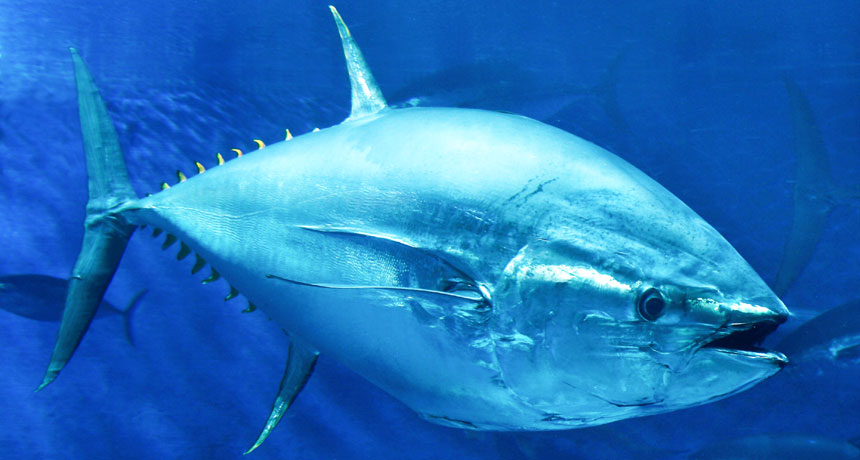Newly discovered lymph hydraulics give tunas their fancy moves

In fishes as familiar as tunas, humans have managed to find some unknown anatomy: a hydraulic system based on lymph.
Often the underdogs of body parts, vertebrate lymph systems can do vital chores such as fight disease but rarely get the attention that blood systems do. Yet it turns out to be lymph, not blood, that rushes into two sickle-shaped tuna fins and fans them wide during complex swimming maneuvers, says Barbara Block of Stanford University.
Tuna bodies are relatively “stiff and only wag at the tail,” she says. That’s efficient for long-distance cruising. For zigs and zags, Pacific bluefin and yellowfin tunas get extra control from muscles, bones and lymph tweaking the shape of a fin on the back and its counterpart underneath, Block and colleagues report in the July 21 Science.
Among other tests, the researchers injected a tuna specimen with blue liquid that highlighted a complex of channels near and within the fins. Injecting a saline solution into the channels raised or lowered the fins depending on the pressure. Immunological and other tests confirmed that it’s lymph that changes the fin shape.
Lymph shape-changing also evolved in birds — but in a different way. Lymph, not blood, inflates the penis in ducks, emus, chickens and probably other birds that have such an organ, notes Patricia Brennan of the University of Massachusetts Amherst, who studies the evolution of sexual organs. Whether a male tuna would similarly use lymph, however, is a hypothetical question: Tunas didn’t evolve a penis.